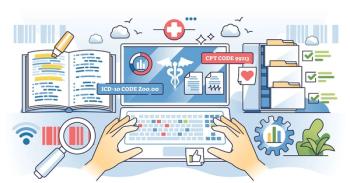
Chronic-Care Patients: Easing the Burden on Physicians
A new billing code allows docs to be reimbursed for non face-to-face care for patients with two or more chronic conditions lasting 12 months or more.
Over the next ten years, it is predicted that chronic diseases, such as heart disease, asthma, cancer, and diabetes, will affect an estimated
Physicians who regularly treat these typically older, chronic-care patients say their work is rewarding. They appreciate having the challenge of treating complex conditions and the opportunity to work as a team with specialists to collaboratively manage a patient’s conditions. At the core of their work is being able to help patients who are truly in need.
Yet, there are also many challenges. Writing last summer in the
Another major concern for physicians is having access to the patient. Getting in to see a doctor can be hard for anyone, but for elderly patients, it can be even more difficult. This can especially be the case when the patient does not drive and has limited transportation options or does not have a caregiver nearby. Some physicians have turned to phone calls. For Robert Wergin, the physician president of the American Academy of Family Physicians, contacting elderly patients who were not able to come to his office in rural Nebraska for in-person visits could take
Not only can it be difficult for physicians to find time to make these kinds of calls, it can also cost a practice money. Unlike lawyers, doctors have not been able to charge patients for phone consultations until recently. If, on average, primary-care physicians spend two (unpaid) hours a day coordinating care for Medicare patients with chronic conditions, this could add up to more than $30,000 in lost revenue on an annual basis.
A New Billing Code and a New Option
In a move to help physicians monitor their chronic-care patients, Medicare introduced a new billing code earlier this year. Called
Essentially, code 99490 serves as a way for Medicare to encourage physicians to continue to do the critical, yet time-consuming, work they are already doing and to receive reimbursement for it. However, many physicians remain unaware of the code, and even those who are familiar with the option may be hesitant about how to best implement the processes needed.
First and foremost, it requires someone to place the calls. The code allows either the physician or a qualified healthcare professional to furnish these services. Some physicians may choose to designate an internal representative to serve in this capacity, while others may consider some of the third-party resources that are available to act as an extension of the practice.
Next, there is the need for meticulous record-keeping. To implement the billing for this code, a detailed log must be kept for all emails, text messages, and phone calls corresponding to each patient that is billed. Each month, the total amount of time spent coordinating the patient care must total at least 20 minutes in order to qualify for reimbursement. This places an additional burden on staff time.
Phone calls are fairly easy to calculate by time. Where it gets tricky is in trying to quantify time spent handling email and text communications. Software solutions are available, but still require staff time and training. Many technology products also come with supplementary or ongoing costs for things like monitoring, upgrades, and governance -meaning that the full expense can extend far beyond the initial purchase price.
Additionally, there is a need for inputting updates from the call and other information into the practice’s EHR system. Studies have shown that despite the positive effects of the EHR’s usage in medical practices, adoption is still low. Not surprisingly, small to medium sized practices -namely those without large IT budgets -pointed to cost concerns as being the biggest barrier in adopting an EHR system,
We will have to wait and see how many physicians choose to utilize CPT code 99490 for their chronic care patients or what the true return on investment will be. However, having a new option through which physicians can accurately monitor a significant part of the population is certainly worth exploring. It is a smart next step in doing what every physician wants: to deliver the best, most efficient care to their most vulnerable patients.
Michelle McKamy is Director of Special Projects at
Newsletter
Optimize your practice with the Physicians Practice newsletter, offering management pearls, leadership tips, and business strategies tailored for practice administrators and physicians of any specialty.








